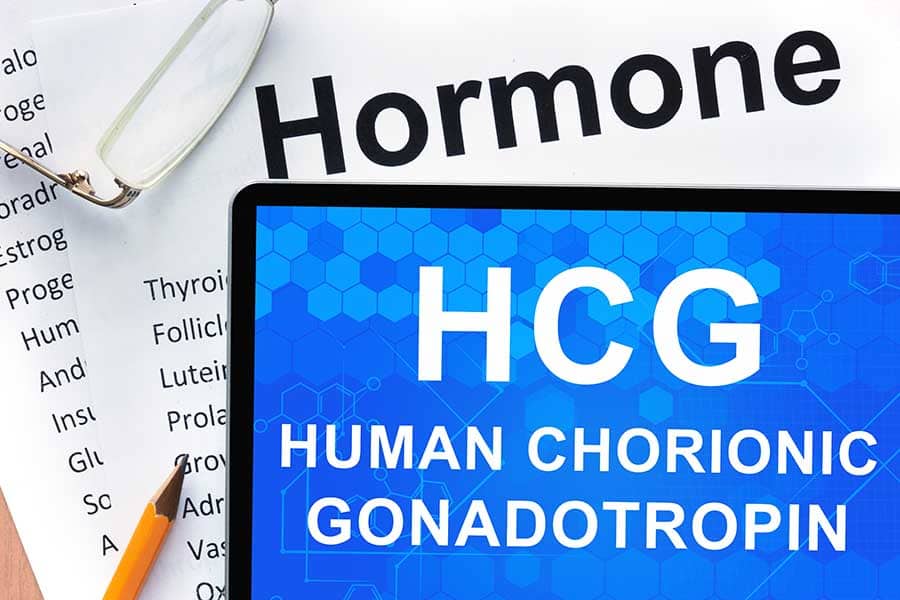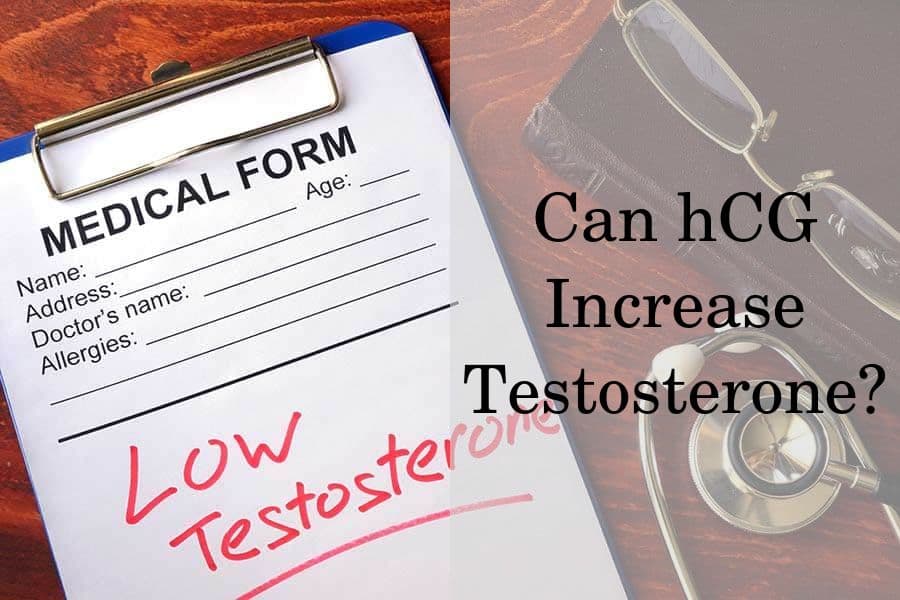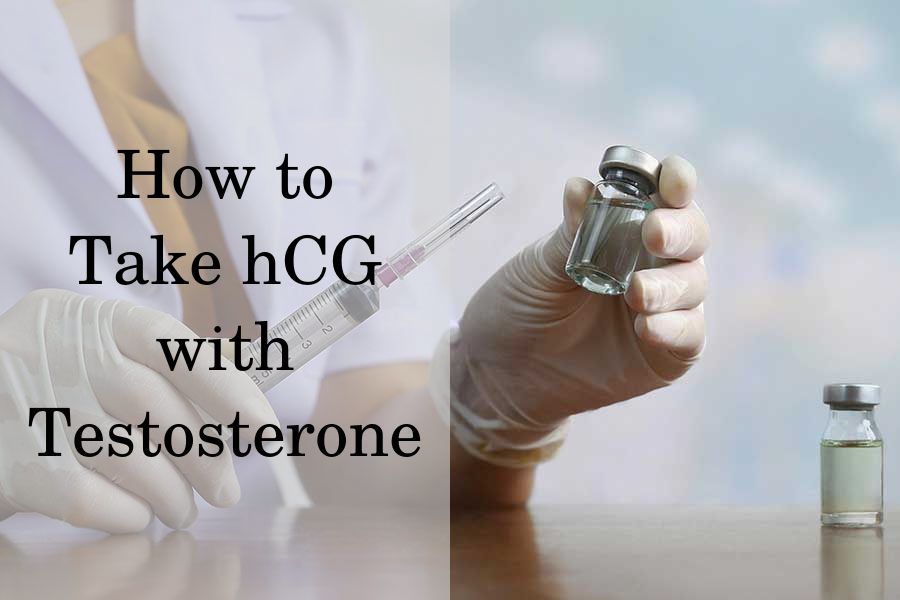Human chorionic gonadotropin (hCG) is a hormone that is most often associated with pregnant women. Yet, hCG is also the first hormone that stimulates the production of testosterone (T) in men since the intrauterine period.
Due to this effect of the hormone, men with low T may seek hCG therapy in an attempt to restore their natural testosterone levels and reap all related benefits such as fat loss, muscle gains, increased energy, improved mood, and more.
Yet, hCG may be effective only in specific cases of low testosterone, and even then there is not much data on how reliable the therapy would be in improving testosterone levels in those patients.
One such scenario would be using hCG alongside TRT, as it may allow patients with preserved testicular function to remain fertile.
Instead, the most studied option for treating low T in men is testosterone replacement therapy (TRT). That’s why both scientists and medical doctors choose and prescribe TRT as the preferred option for managing symptoms in men with low T.
Keep reading to discover more about the truth regarding the potential effects of hCG in men with low T, both as a monotherapy and in combination with TRT.
What is HCG and how does it work?
The placenta that forms during pregnancy is the main organ that naturally produces hCG.
One of the functions of this hormone during pregnancy is to stimulate the synthesis of testosterone in the testes of the male fetus. That is until the pituitary gland can take over by beginning to synthesize the gonadotropic hormones LH and FSH.
They are responsible for stimulating the function of the testes in children and adults. Adult men still have some small amounts of hCG which are produced at all times by the testicles. Yet, these low hCG levels are insufficient to have any noticeable effects.
Since hCG can mimic the function of LH and stimulate the synthesis of T in the testes, this has led to the investigation of the potential therapeutic effects of exogenous hCG and the approval of hCG for several indications.
Currently, the FDA-approved indications for hCG therapy are:
- Prepubertal cryptorchidism (undescended testes) in male children that is not due to anatomical obstruction
- Selected cases of hypogonadotropic hypogonadism (hypogonadism secondary to a pituitary deficiency) in males
- Induction of ovulation and pregnancy in selected cases of anovulatory and infertile women
Hypogonadotropic hypogonadism is the only medical indication in adult males, for which hCG therapy is approved
Hypogonadotropic hypogonadism is a condition that manifests with low testosterone and related symptoms. Testosterone deficiency occurs due to a pituitary problem and lack of stimulus by the pituitary gland which results in declining testicular function.
Taking exogenous hCG can take over the function of the low LH and stimulate the testes to function normally. Yet, this can happen only in patients which have developed hypogonadotropic hypogonadism relatively recently and the function of the testes is at least partially preserved.
Long-term hypogonadotropic hypogonadism leads to testicular atrophy, which can damage the function of the testes permanently and make them unresponsive to stimuli such as LH or hCG.
How does HCG affect testosterone?
The effects of hCG in men with low T have been a subject of scientific research for several decades. That’s because hCG can increase T levels by activating the Leydig cells in the testes. These are the main cells that produce testosterone in healthy men.
Yet, scientists suggest that the effects of hCG require further investigation. For example, the American Urological Association reports that a much greater study is needed on the role of hCG in the treatment of low T.
That is despite the fact that hCG therapy lacks a notable side effect of other much more popular treatments such as TRT. In fact, hCG does not suppress the function of the testicles including testosterone and sperm production.
How effective is hCG for low T?
However, the reliability of hCG appears to depend on many factors including the severity and duration of secondary hypogonadism, the size of the testes as well as the lifestyle and body weight of the patient.
For example, in one small trial, 20 men with symptoms of low testosterone and average T levels of 361.8 ng/dL were given 2000 IU of hCG weekly. Following 6 months of therapy, average serum T levels increased to 519.8 ng/dL but symptoms decreased only in 50% of the patients. Thus, some of the patients did not achieve symptom relief.
According to most researchers and specialists, the most common regimens used to treat men with secondary hypogonadism consist of hCG 1,500–2,000 IU 2–3 times weekly and the therapy aims to achieve testosterone levels within the normal range.
Men with normal body weight and recently developed hypogonadism may be able to restore normal T levels and spermatogenesis within 4-6 months of therapy.
Unfortunately, the effects of hCG on increasing testosterone are not permanent. If your pituitary gland can no longer produce LH, then discontinuing hCG therapy will cease the stimulus on the testes, and T levels will drop to pretreatment levels.
On the other hand, if the natural LH synthesis in the pituitary was temporarily suppressed by medications or TRT, short-term hCG may help speed up the recovery period.
How to use HCG during TRT
Scientists are also investigating the option of taking TRT and hCG therapy together, in order to preserve fertility during hormonal replacement. That’s because taking TRT alone suppresses the function of the pituitary gland which inhibits the stimulus on the testes for endogenous T synthesis.
Yet, the levels of T inside the testes depend on the endogenous synthesis of testosterone and they are crucial for normal spermatogenesis. That’s why TRT can lead to infertility.
Therapy with hCG can reinstate the stimulus to the Leydig cells in the testes and therefore it can restore intratesticular testosterone levels and the production of fertile sperm.
How much HCG to take with testosterone?
According to research, taking 500 IU of hCG every other day alongside TRT is sufficient to maintain or even increase intratesticular TRT and preserve fertility. Longer trials also reported that spermatogenesis and fertility are preserved with 500 IU hCG alongside TRT for at least a year of follow-up.
It is important to note that mixing hCG and TRT in the same syringe is generally inadvisable and inappropriate, which is why it should be avoided during concomitant therapy.
That’s because TRT is usually given as an intramuscular injection, usually biweekly, monthly, or only several times per year. In comparison, hCG can be injected either intramuscularly or subcutaneously, but it should be taken every other day.
The subcutaneous route is generally preferred as it is easier to administer, provides a longer half-life and the serum hCG levels increase more slowly. Nevertheless, studies in men report that the effect of hCG on T levels is identical regardless of the method of injection.
How long does it take for HCG to restore fertility after TRT?
If you are currently infertile due to hypogonadism and/or TRT, and you wish to restore your fertility within 6 months or less, then discontinuing TRT and increasing the hCG dosage may be an effective strategy. To achieve that, researchers recommend starting on 3,000 IU hCG every other day after quitting TRT.
In addition, a selective estrogen receptor modulator can also be added such as clomiphene to speed up the process and stop testosterone from converting to estrogen. Estrogen is often increased during TRT and Clomiphene works by blocking the suppressive effects of estrogen on the pituitary.
According to scientists, the testicular size is the main predictor of the potential success of hCG for restoring fertility. In comparison, quitting TRT without administering hCG has been shown to restore fertility in 50% of the patients after 6 months, and 10% fail to regain fertility even within 12 months.
HCG vs Testosterone therapy
Although both hCG and TRT can help increase serum T levels, there is one key difference in their benefits.
In fact, hCG therapy will provide benefits only for a specific subset of patients with low T – those with secondary hypogonadism and functional testes. The treatment can also restore fertility and may help reduce symptoms of low T in those patients.
On the other hand, the main benefit of TRT is that the treatment can fully alleviate the symptoms of hypogonadism in all patients with low T.
Furthermore, an advantage of TRT is that the therapy is available in many different forms including injections, implants, and gels.
The injections can also be dosed less frequently – usually weekly or even monthly, compared to having to inject hCG every other day.
Here is also a comparison of the potential side effects of both therapies:
| hCG therapy | TRT injections |
| allergic reactions | infertility |
| headache | headache |
| acne | acne |
| reactions at the injection site | reactions at the injection site |
| gynecomastia | gynecomastia |
| risk of blood clots | risk of blood clots |
| difficulty urinating | difficulty urinating |
Considering the fact that hCG therapy is suitable only for a specific subset of patients with hypogonadism, it is less studied, and it has similar side effects, it cannot be recommended as a better treatment for low T than TRT.
The use of hCG instead of TRT or alongside TRT should be considered only in cases of hypogonadal hypogonadism and in patients who have both the potential and the desire to preserve their fertility while managing their symptoms of low T.
Get a free consultation with our medical expert for any questions about hormone replacement therapy



